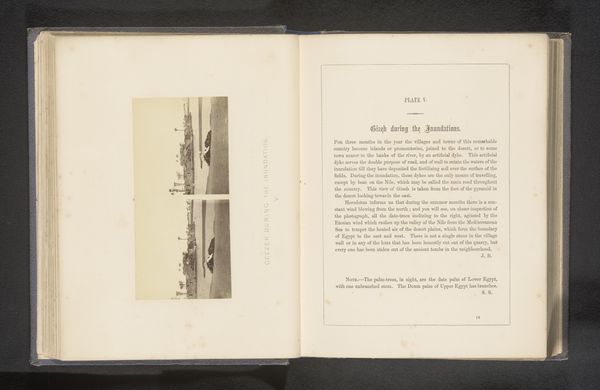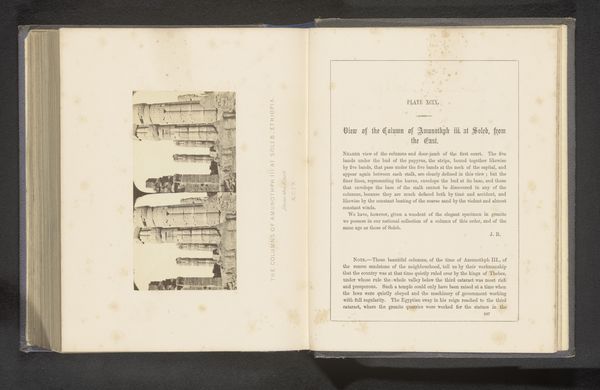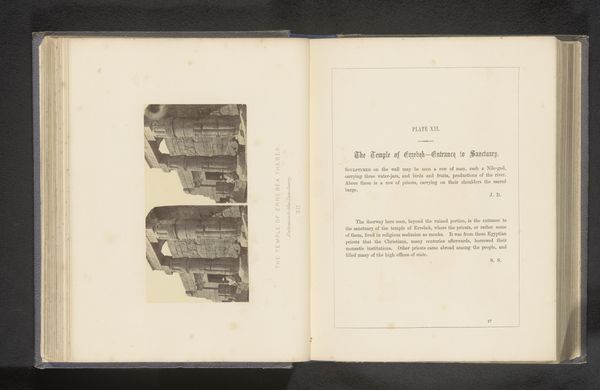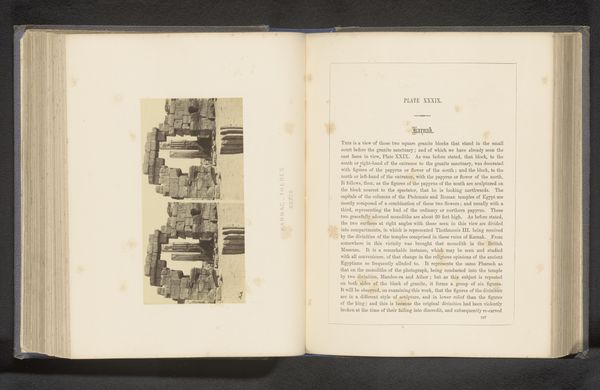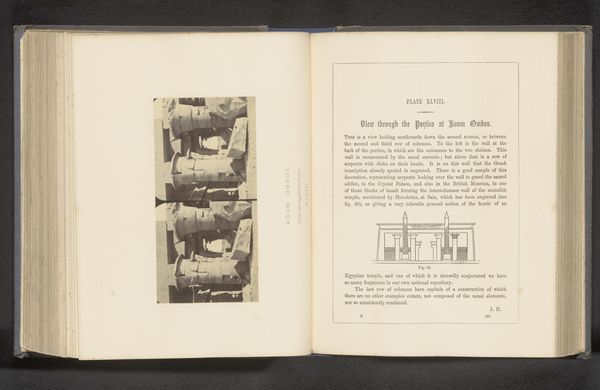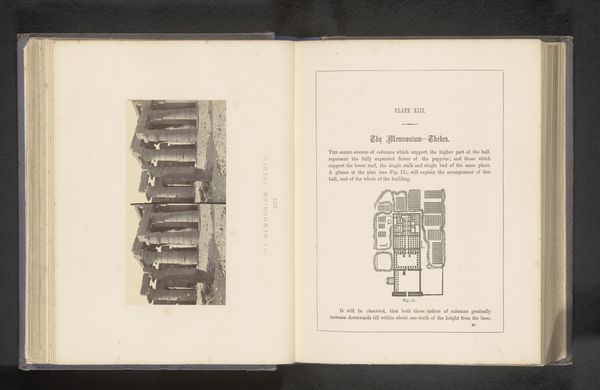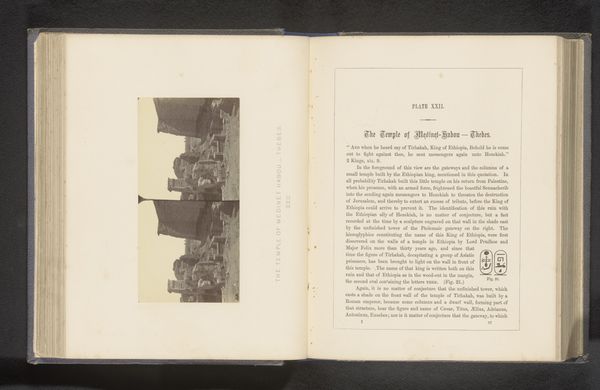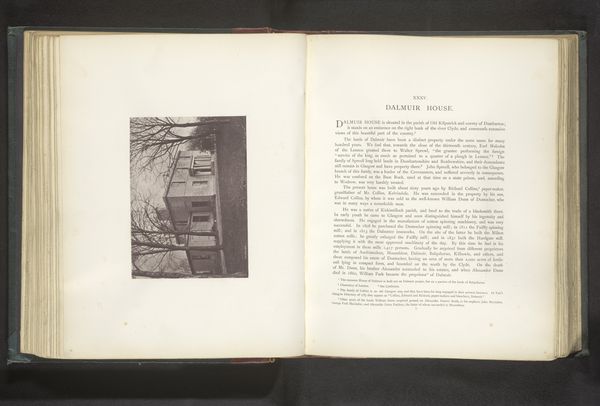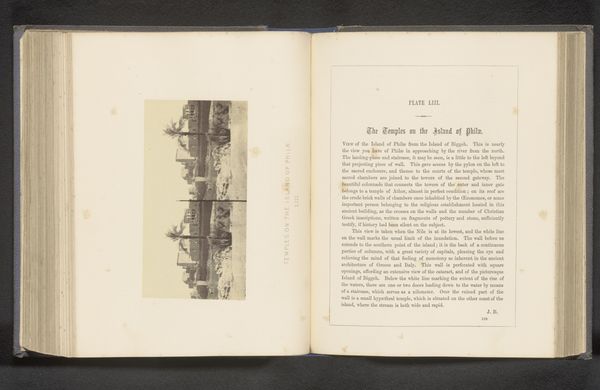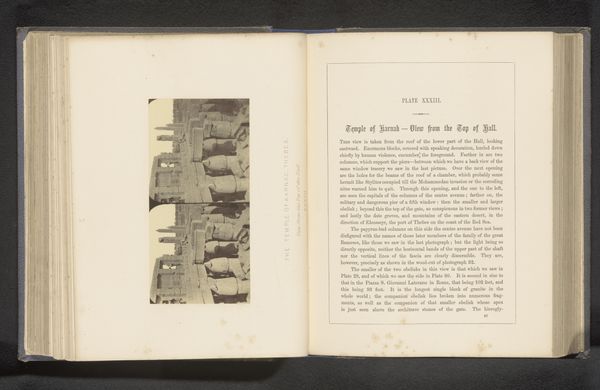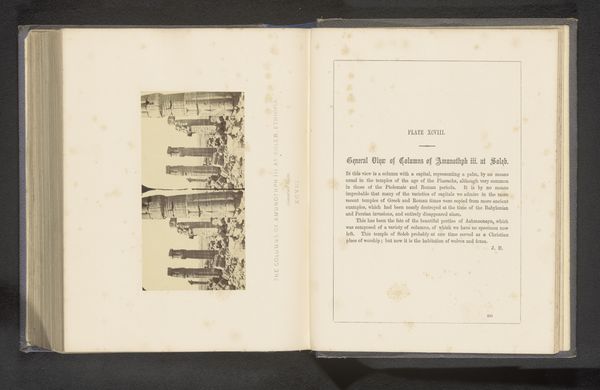
print, photography, albumen-print, architecture
# print
#
landscape
#
ancient-egyptian-art
#
photography
#
ancient-mediterranean
#
albumen-print
#
architecture
Dimensions: height 74 mm, width 144 mm
Copyright: Rijks Museum: Open Domain
Editor: So, this is Francis Frith’s albumen print, “Pilaren bij het tempelcomplex te Philae,” taken before 1862. It’s currently housed in the Rijksmuseum. The albumen print gives a sepia tone that evokes a feeling of ancient times and the texture looks stunning. What strikes me most is the composition and how the photographer framed these majestic columns; what do you see in this print, using a Formalist approach? Curator: The print exemplifies a meticulous orchestration of visual elements. Consider how Frith uses the repetitive, almost rhythmic, verticality of the pillars juxtaposed against the strong horizontal lines of the entablature. It’s a play between upward aspiration and grounded stability. Also, let's acknowledge how the subtle gradations of light and shadow articulate the architectural form. Where do you think the eye is led and how are the semiotic building blocks put in place by the artist? Editor: I would say that our eyes are drawn up, tracing the columns to the heavy entablature and play of light and shadow. What I find interesting here is that it appears very different compared to looking at those structures now. Do you think there might have been changes since then or some deliberate intervention through this use of light, for example? Curator: Perhaps that is so, but notice the calculated perspective. The vantage point doesn't try to replicate direct human experience of this ancient temple in Philae. What becomes prominent are structural patterns and visual relationships. This in turn results in a feeling of scale in space that allude to timelessness. Editor: The focus on form really highlights how different this artistic choice is from simply documenting ruins. I understand this focus has the power to change viewers perceptions of the passage of time. Curator: Indeed! Now when viewing similar structures elsewhere we can use formal awareness in that process, instead of cultural associations alone.
Comments
No comments
Be the first to comment and join the conversation on the ultimate creative platform.
